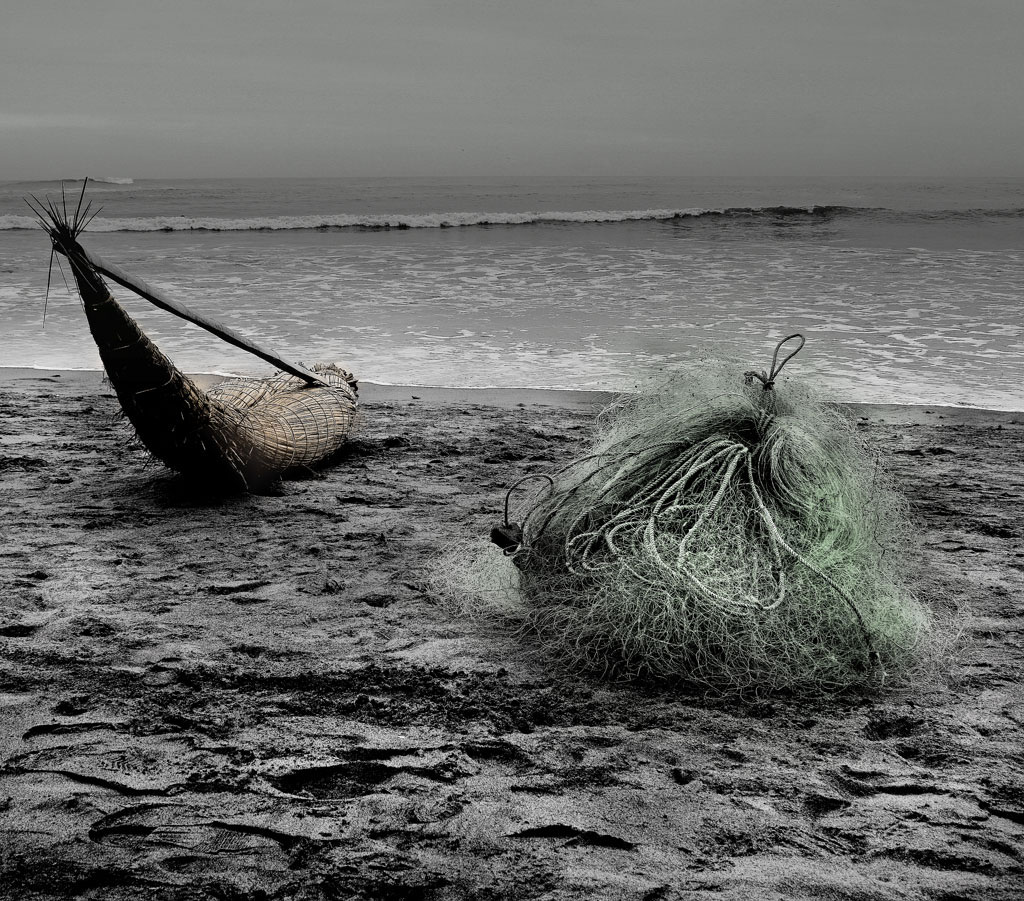
Reed watercrafts used by Peruvian fishermen for the past 3,000 years; Northern Peru. Photo source: ©© Pirindao
Summary;
Culture contact can lead to unexpected consequences. The population of Peru dropped precipitously after the Spanish Conquest, changing the patterns and intensity of economic activities. In northern Peru, such changes affected the evolution of beach ridges (narrow sand dunes many kilometers long, parallel to the shoreline) north of the Chira River. A similar hiatus in beach ridge formation about 2,800 y ago correlates with increased El Niño frequency, and possibly a local decline in population at that time. This study illustrates the value of comparing historic, archaeological, climatic, and geological data to understand change in coupled natural and human systems.
Abstract:
When Francisco Pizarro and his small band of Spanish conquistadores landed in northern Peru in A.D. 1532 to begin their conquest of the vast Inca Empire, they initiated profound changes in the culture, language, technology, economics, and demography of western South America. They also altered anthropogenically modulated processes of shoreline change that had functioned for millennia. Beginning with the extirpation of local cultures as a result of the Spanish Conquest, and continuing through today, the intersection of demography, economy, and El Niño-driven beach-ridge formation on the Chira beach-ridge plain of Northwestern Peru has changed the nature of coastal evolution in this region. A similar event may have occurred at about 2800 calibrated y B.P. in association with increased El Niño frequency…
How The Spanish Invasion Altered The Peruvian Coast, Earth Magazine









